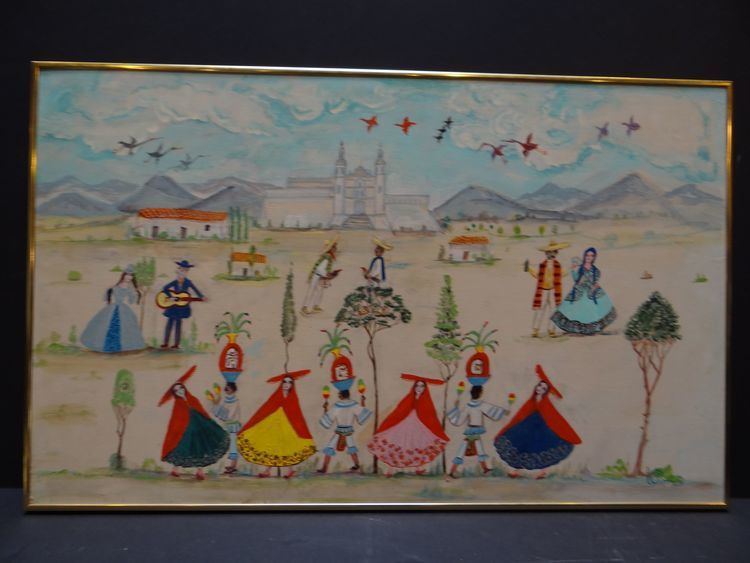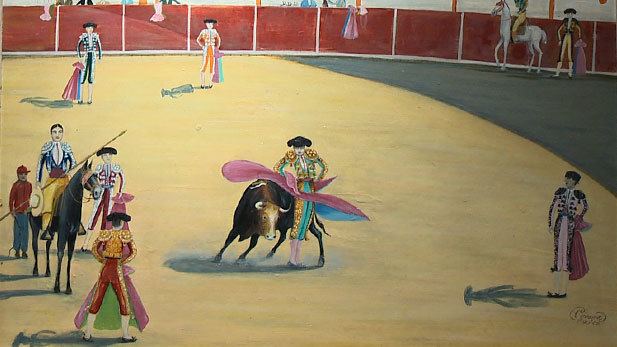Full Name Salvador Corona Role Artist Nationality Mexican, American Died 1990 | Movement Folk Art Name Salvador Corona | |
 | ||
salvador corona matador to muralist at the arizona state museum
Salvador Corona (1895–1990) was a Mexican-American bullfighter and artist who created an iconic folk-art style of figure and pastoral painting on everyday objects. The style is characterized by colorful Mexican scenes on a white background. The style was emulated and copied becoming a ubiquitous to the southwest and broader towns tourist trade in the 1960s.
Contents
- salvador corona matador to muralist at the arizona state museum
- Life and work
- Mural location
- References

Life and work
Salvador Corona was born on his family's ranch Hacienda Mideras in the Mexican state of Chihuahua. Corona’s family moved to Mexico City in 1903 when he was 8. He attended the New English College in Mexico and then crossed into a career in bull fighting entering the ring for the first time in 1913. In 1919 in Guadalajara he was gored and turned to painting. He was given his first painting lessons by fellow bullfighter Jose Jimenez.
His traditional self-developed folk art style images depicted pastoral colorful scenes of Maximilian era Mexico painted on white backgrounds.
His work can be divided into three categories: a vice-regal era with European and Creole noblemen mixed with Indians; stylized landscapes of Patscuaro, Acapulco or the Canal of Santa Anita; and his iconographic Mexican Virgins painted in tones of blue, purple, and gold often encrusted with mother of pearl.
Corona moved to Tucson in 1950. His studio and residence was located at 1701 East Speedway Boulevard, and then 902 North 4th Avenue overlooking Catalina Park.
While in Tucson his work was sold exclusively through Frank Patania Thunderbird shops located next to the Fox Theatre (Tucson, Arizona) and in Josias Joesler designed Broadway Village. His work was owned by U.S. President Franklin D. Roosevelt.
